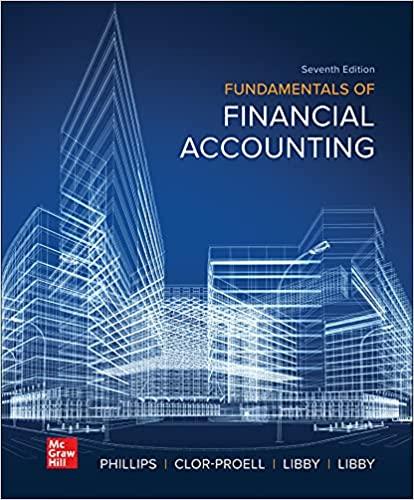Question
Read paragraphs 20-23 below and summarize the key points in this example. 20 .The objective of using present value in an accounting measurement is to
Read paragraphs 20-23 below and summarize the key points in this example.
20.The objective of using present value in an accounting measurement is to capture, to the extent possible, the economic difference between sets of future cash flows. For example, each of the 5 assets listed below has a future cash flow of $10,000:
a. An asset with a fixed contractual cash flow of $10,000 due in 1 day. The cash flow is certain of receipt.
b. An asset with a fixed contractual cash flow of $10,000 due in 10 years. The cash flow is certain of receipt.
c. An asset with a fixed contractual cash flow of $10,000 due in 1 day. The amount that ultimately will be received is uncertain. It may be less than $10,000 but will not be more.
d. An asset with a fixed contractual cash flow of $10,000 due in 10 years. The amount that ultimately will be received is uncertain. It may be less than $10,000 but will not be more.
e. An asset with an expected cash flow of $10,000 due in 10 years. The amount that ultimately will be received is uncertain, but it may be as high as $12,000, as low as $8,000, or some other amount within that range.
21. Four of those assets have the same contractual cash flow ($10,000), and the expected cash flow from the fifth is also that amount. Few would argue that they are economically the same or that a rational marketplace participant would pay the same price for each. The assets are distinguished from one another in timing and uncertainty, but an accounting measurement based on undiscounted cash flows would measure all five at the same amount. In contrast, present value helps to distinguish between unlike items that might otherwise appear similar. A present value measurement that incorporates the uncertainty in estimated future cash flows always provides more relevant information than a measurement based on the undiscounted sum of those cash flows or a discounted measurement that ignores uncertainty. (Refer to Appendix A for a numerical illustration.)
22. Any combination of cash flows and interest rates could be used to compute a present value, at least in the broadest sense of the term. However, present value is not an end in itself. Simply applying an arbitrary interest rate to a series of cash flows provides limited information to financial statement users and may mislead rather than inform. To provide relevant information for financial reporting, present value must represent some observable measurement attribute of assets or liabilities. (As noted in paragraph 25, this Statement identifies that attribute as fair value.)
23. A present value measurement that fully captures the economic differences between the five assets described in paragraph 20 would necessarily include the following elements:
a. An estimate of the future cash flow, or in more complex cases, series of future cash flows at different times
b. Expectations about possible variations in the amount or timing of those cash flows
c. The time value of money, represented by the risk free rate of interest
d. The price for bearing the uncertainty inherent in the asset or liability
e. Other, sometimes unidentifiable, factors including liquidity and market imperfections.
Step by Step Solution
There are 3 Steps involved in it
Step: 1

Get Instant Access to Expert-Tailored Solutions
See step-by-step solutions with expert insights and AI powered tools for academic success
Step: 2

Step: 3

Ace Your Homework with AI
Get the answers you need in no time with our AI-driven, step-by-step assistance
Get Started


